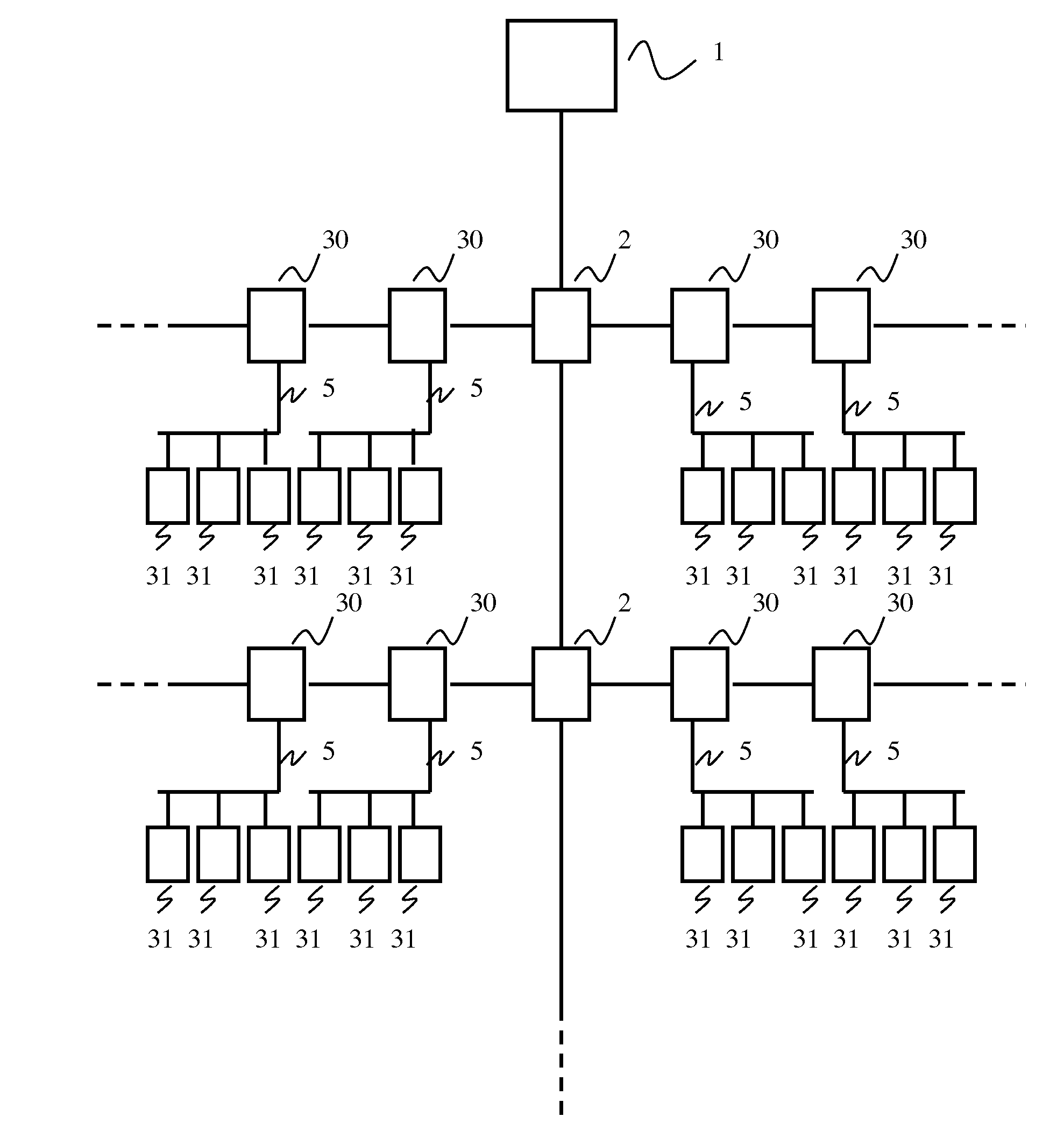Digital seismic sensor and acquisition device adapted to be connected together via a two-conductor line
a digital seismic sensor and acquisition device technology, applied in the field of seismic data acquisition, to achieve the effect of improving the compactness of seismic digital sensors
- Summary
- Abstract
- Description
- Claims
- Application Information
AI Technical Summary
Benefits of technology
Problems solved by technology
Method used
Image
Examples
Embodiment Construction
[0101]In all of the figures of the present document, identical elements and steps are designated by the same numerical reference sign.
[0102]FIGS. 1, 2 and 6 relate to prior art and have already been discussed above.
[0103]Referring now to FIG. 3, we present a seismic data acquisition system according to a particular embodiment of the invention.
[0104]As in FIGS. 1 and 2, the seismic data acquisition system comprises a central recording system 1 (usually onboard a recording truck) and intermediate collection devices 2 (“concentrator devices”).
[0105]As in FIG. 1, the system also comprises strings of sensors, but in FIG. 3 the sensors used are new digital sensors 31 (see description of FIG. 4 below).
[0106]For a best understanding of the present invention, each reference 31 designates a digital sensor and its corresponding housing and casing.
[0107]Each string of digital sensors 31 is connected, via a two-conductor line 5, to a new acquisition device 30, also referred to below as “new Digi...
PUM
 Login to View More
Login to View More Abstract
Description
Claims
Application Information
 Login to View More
Login to View More - R&D
- Intellectual Property
- Life Sciences
- Materials
- Tech Scout
- Unparalleled Data Quality
- Higher Quality Content
- 60% Fewer Hallucinations
Browse by: Latest US Patents, China's latest patents, Technical Efficacy Thesaurus, Application Domain, Technology Topic, Popular Technical Reports.
© 2025 PatSnap. All rights reserved.Legal|Privacy policy|Modern Slavery Act Transparency Statement|Sitemap|About US| Contact US: help@patsnap.com



